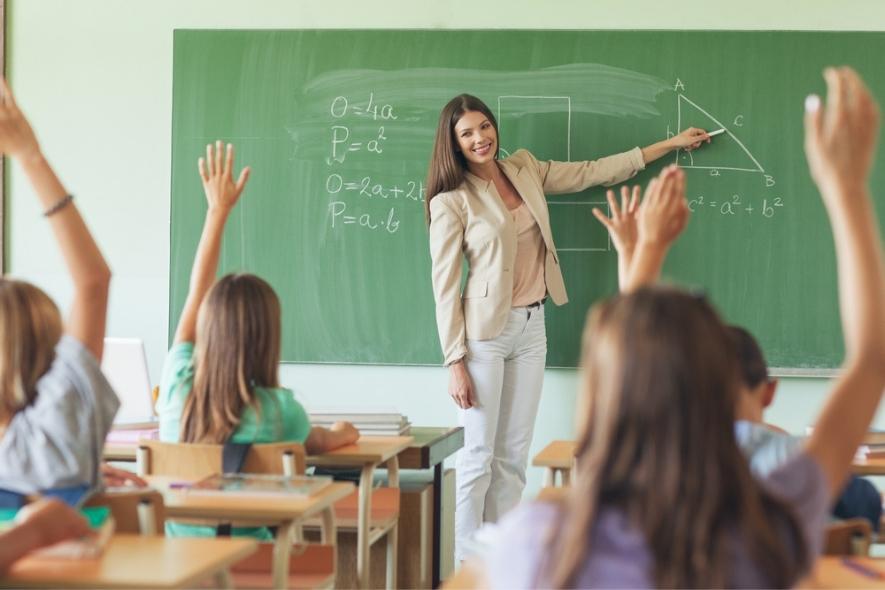Find the Best Primary Science Tuition Singapore for Enhanced Learning
Find the Best Primary Science Tuition Singapore for Enhanced Learning
Blog Article
A Comprehensive Guide to the Different Discovering Approaches in Key Science Direction
The expedition of varied learning methods in main scientific research guideline presents a possibility for educators to improve pupil involvement and comprehension substantially. By examining hands-on learning methods, inquiry-based techniques, and joint strategies, we can identify effective practices that cater to different discovering styles. Furthermore, the combination of modern technology and differentiated instruction plays an important function in promoting a comprehensive setting. Nonetheless, the inquiry remains: how can these methods be effectively carried out in the classroom to maximize their influence? The solution depends on a better examination of each technique and its ramifications for teaching scientific research.

Hands-On Learning Methods
Hands-on discovering strategies play a crucial role in primary science instruction, involving students in active exploration and experimentation. These methods allow learners to interact directly with sensations and materials, promoting a much deeper understanding of clinical concepts. By utilizing manipulatives, versions, and real-life experiments, teachers create an atmosphere where trainees can observe, hypothesize, and test their ideas.
Such techniques not just boost understanding however likewise cultivate critical reasoning and analytic abilities. When trainees take part in activities like constructing straightforward makers, planting seeds, or performing chain reactions, they are urged to ask concerns and seek solutions with their own monitorings. This experiential strategy assists to demystify intricate scientific principles, making them extra relatable and obtainable.
Moreover, hands-on knowing advertises partnership among peers, as pupils commonly operate in teams to conduct experiments or share searchings for. This team effort not only improves their discovering experience but additionally establishes vital social skills. Ultimately, incorporating hands-on strategies in main science instruction promotes a lifelong love of understanding and inquisitiveness regarding the environment, laying a solid foundation for future scholastic pursuits in scientific research and beyond.
Inquiry-Based Discovering
Inquiry-based learning is a training strategy that encourages pupils to ask questions, check out sensations, and construct their very own understanding of clinical concepts. This technique shifts the emphasis from traditional teacher-led direction to a much more student-centered experience, where students take the initiative in their educational trip. By cultivating curiosity, inquiry-based discovering advertises deeper interaction with the product, allowing trainees to discover subjects in a meaningful context.
In method, this technique frequently includes hands-on experiments, monitorings, and essential thinking tasks that straighten closely with the scientific technique. Trainees are motivated to create theories, layout investigations, and analyze information, which cultivates necessary abilities such as analytic and logical thinking. The function of the instructor in this structure is to facilitate exploration, guiding students through the inquiry process while urging independent thought and partnership.
Additionally, inquiry-based discovering supports a sense of ownership over the knowing process, motivating students to seek expertise proactively. This approach not just improves understanding of scientific ideas however also fosters a long-lasting love for understanding, outfitting trainees with the skills needed to navigate a progressively complex world.
Collaborative Understanding Approaches
Collective knowing approaches encourage pupils to participate in meaningful communications with peers, promoting a shared obligation for their educational end results. In main science guideline, these methods encourage learners to function together to discover scientific principles, fix problems, and perform experiments (primary science tuition Singapore). By taking part in group tasks, students can utilize varied point of views, enabling richer understanding and retention of clinical understanding
One trick element of collaborative understanding is the emphasis on interaction skills. Pupils should verbalize their thoughts, pay attention actively to others, and discuss ideas, all of which are critical proficiencies in both real-world and academic contexts. This social interaction not just improves their understanding of scientific principles yet also advertises synergy and dispute resolution abilities.
When students see the worth of their payments within a team, they are a lot more likely to take ownership of their learning journey. In general, integrating collective knowing approaches in key scientific research direction cultivates a dynamic learning setting that prepares trainees for future academic and social difficulties.
Innovation Integration in Scientific Research
The assimilation of innovation in primary science instruction boosts discovering experiences by offering cutting-edge devices and sources that support various teaching approaches, including collective understanding - primary science tuition Singapore. Making use of electronic systems, simulations, and interactive applications enables students to involve deeply with scientific principles, promoting a much more hands-on approach to understanding
Online research laboratories, for circumstances, enable learners to perform experiments safely and successfully, promoting inquiry-based understanding. These tools can imitate real-world scientific circumstances, allowing pupils to visualize intricate processes that would be difficult to duplicate in a traditional class setup. Modern technology fosters communication and cooperation amongst students, as they can share findings and function with each other on projects with on-line systems.
Additionally, multimedia presentations and academic video clips can enrich lessons by satisfying diverse discovering designs, making abstract principles extra accessible. Data analysis devices likewise encourage pupils to collect and interpret scientific data, strengthening essential assuming abilities. Overall, the strategic incorporation of innovation in main science direction not only improves interaction however likewise prepares trainees for a highly innovative culture, outfitting them with essential skills for future scientific undertakings.
Differentiated Guideline Strategies
Distinguished instruction methods are crucial for attending to the diverse requirements of students in primary scientific research education and learning. These methods allow educators to tailor their mentor methods to accommodate varying abilities, interests, and discovering designs within the class. By utilizing distinguished click now direction, educators can produce an inclusive atmosphere that cultivates interaction and improves understanding of clinical ideas.
One efficient strategy is to make use of versatile grouping, which allows pupils to work together with peers at similar ability levels or with varying point of views. This strategy motivates peer knowing and advertises vital thinking. Additionally, supplying options in assignments can encourage students, permitting them to select tasks that resonate with their passions while still meeting curricular purposes.
Moreover, including tiered assignments is one more valuable method. Deliberately tasks with differing levels of intricacy, instructors can guarantee that all pupils are appropriately tested, despite their effectiveness. Utilizing formative analyses to evaluate recognizing further allows educators to adjust their training approaches dynamically, ensuring that each learner gets the assistance they require.
Ultimately, carrying out set apart instruction techniques in key scientific research education not only improves trainee understanding results yet also cultivates an enthusiasm for scientific research, preparing pupils for future scholastic searches.

Verdict
In recap, efficient primary scientific research direction necessitates a complex method that encompasses hands-on discovering, inquiry-based techniques, and joint methods. The integration of modern technology and distinguished guideline additionally deals with varied learning designs, fostering a setting conducive to expedition and crucial reasoning. By executing these approaches, educators can boost student interaction and understanding, eventually supporting a lifelong enthusiasm for scientific research and inquiry. Such detailed methodologies are essential for establishing educated and curious future scientists.
The expedition of diverse discovering approaches in key scientific research instruction presents a chance for instructors to enhance student interaction and comprehension dramatically.Hands-on knowing strategies play a pivotal role in primary scientific research instruction, engaging trainees in energetic expedition and trial and error.Inquiry-based knowing is an educational approach that encourages students to ask questions, investigate sensations, and create their very own understanding of clinical ideas.Collective knowing methods encourage pupils to engage in significant interactions with peers, promoting a common obligation for their academic end results. Generally, incorporating collective learning strategies in primary science instruction cultivates a vibrant understanding he said atmosphere that prepares here pupils for future scholastic and social obstacles.
Report this page